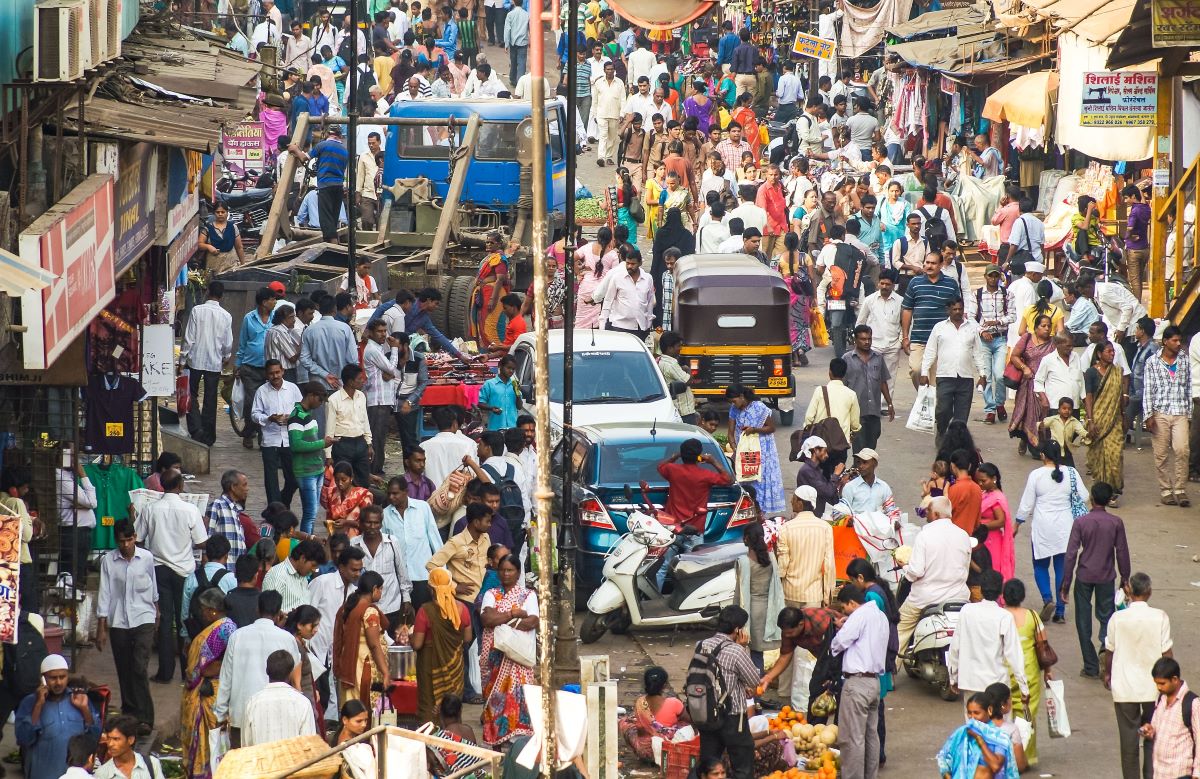The solution to the delimitation conundrum is to make the prize at the end of this race worth a lot less so that no one complains too much.

India population. A crowded street in Mumbai. (iStock)
A basic compact of democratic societies is that we like to think we are all equal stakeholders in our societies.
As an idea, “one person, one vote” stems from that commitment to equality and thus assumes the status of sacred creed. But what is the extent of that creed? Can we extend it to all the world and have a world government?
The answer to that, most people will think, is a no. Where do we begin, and where do we say no more?
These philosophical underpinnings rarely become political questions of the day in an electoral setting.
India, however, is in a strange situation where such abstractions are indeed the issues of most significance in a real political sense.
Every other democratic society periodically redraws the maps of its constituencies, usually once every 10 years, based on the most recent decennial census.
India has a problem: It paused this activity over four decades ago. The 1971 Census Data is still the basis on which India’s various states send their MPs to Lok Sabha.
This pause and, therefore, using the 1971 data will formally expire in 2026.
The Republic of India’s central and possibly existential question is: Do we stay paused or un-pause?
It is existential because some states gain while others lose in this exercise. And that winning and losing of representation will be perverse if the initial reason for the pause is considered. A democracy that plays with the relative value of citizen’s votes is bound to be volatile.
A first and helpful question to ask ourselves is: Why did India decide to pause this delimitation activity?
The answer is that the second half of the 20th century was a wretched time in the country’s history that demanded complex solutions with complicated trade-offs. India’s population was exploding exponentially in the years following independence.
The country’s food production, still stuck in an era with abysmal yields, could not keep pace with the growing demand. There was a time when India sustained itself on foreign aid; the absence of that aid in the form of food grain could well have resulted in a massive famine.
In all its wisdom, the government of the day devised a population control policy. It was declared a policy of national importance.
Population, however, is the fuel on which an electoral democracy runs. Suppose one policy is going to demand a lower population in the future.
In that case, it makes sense, within that context, to freeze the political power that this population will beget across various states because different states very often implement the same policy unevenly and with highly divergent results.
Therefore, through its 44th Amendment, the Government of India froze the number of MPs each state sends to Parliament.
In the decades that followed, the fears of extreme variance in implementation have come true. For instance, between 1971 and 2011, Rajasthan’s population grew by 166 percent.
The population of Kerala grew by 56 percent in the same period. That is, after the Government of India asked all states to control their population, one set of states — primarily those in southern India — did so.
While another set, mostly states in the Indo-Gangetic plains, did not. Or, Kerala and Tamil Nadu were success stories when viewed through this policy lens.
While states like Uttar Pradesh, Madhya Pradesh, Rajasthan, et al were failures.
But what is the success or failure of this policy?
Restarting the delimitation exercise at this point, after 50 years, given this extreme variance in population growth since the freeze, will result in the southern states losing MPs to northern states.
Notably, states like Uttar Pradesh, Rajasthan, Bihar, Madhya Pradesh, Jharkhand, and Chhattisgarh will gain at the expense of Tamil Nadu, Kerala, Telangana, and Karnataka.
All because the South did what it was asked to do and the North did not. Is that fair? Do we want to punish success and reward failure?
People in the Indo-Gangetic plains are well within their rights to feel aggrieved that they aren’t considered equal citizens in the current system where the delimitation exercise has not been carried out since their votes weigh less, given they elect fewer MPs for more people.
But is the answer to that sense of grievance punishing the states that did what they were asked to do? That seems unfair, too.
In one way, the delimitation problem is the political science equivalent of a trolley problem that philosophers are fond of.
The question here has no good answer within the current structure of government.
That is obvious to anyone who understands the problem well. Whatever we do without changing the government structure, one party will be aggrieved, and they’d be right.
The solution, therefore, is to make the prize at the end of this race worth a lot less so that no one complains too much.
And the way to do that is to reduce the powers and privileges of the Union Government dramatically.
And reduce it to one more akin to that of the European Union than the Indian Union.
After all, no one wants to enter a high-stakes game when the stakes are not high! In this context, the incumbent government’s push to amass even greater powers — such as pushing for One Nation, One Election — does precisely the opposite of what’s required.
We are looking at an existential problem that’s likely to be powered by partisans into the forefront for narrow political interests instead of side-stepping it to achieve a stable solution. India, it appears, has a difficult path ahead.

Dec 14, 2023

Nov 24, 2023

Oct 17, 2023

Oct 13, 2023

Oct 11, 2023

Oct 07, 2023